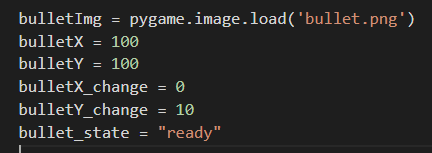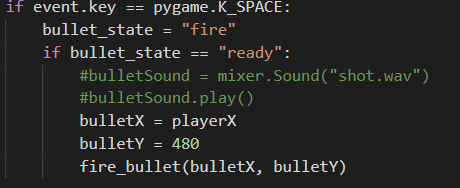Recommended Answers
Jump to PostI'd add a print statment to see exactly what is happening. If you are using a debugger with breakpoints then also add one at the start of your
deadfunction.collision = isCollision(fighterX[i], fighterY[i], playerX, playerY) if collision: dead() collision = isCollision(fighterX[i], fighterY[i], bulletX, bulletY) if …
Jump to Postthe code u showed me only calcualates distance but collision doesn't happen
It returns True if the objects are closer than 27 units apart. I presume your object positions are defined by a centre point. In that case you should probably pass the object widths (or radii) and …
Jump to PostI don't understand. File, menu, and introduction are (up to) three distinct things. If you just want a text based introduction you could always put it in a python module as a triple-quoted (multi-line) string like
intro = """ It returns True if the objects are closer …
Jump to Postfrom Settings import * thats is what i was asking about to create a different file and import it in a different file.
I've never gotten into the finer points of setting up modules for import so I can't explain how they work. However, what I did for …
Jump to PostGlad I could help.
All 18 Replies
We're a friendly, industry-focused community of developers, IT pros, digital marketers, and technology enthusiasts meeting, networking, learning, and sharing knowledge.






